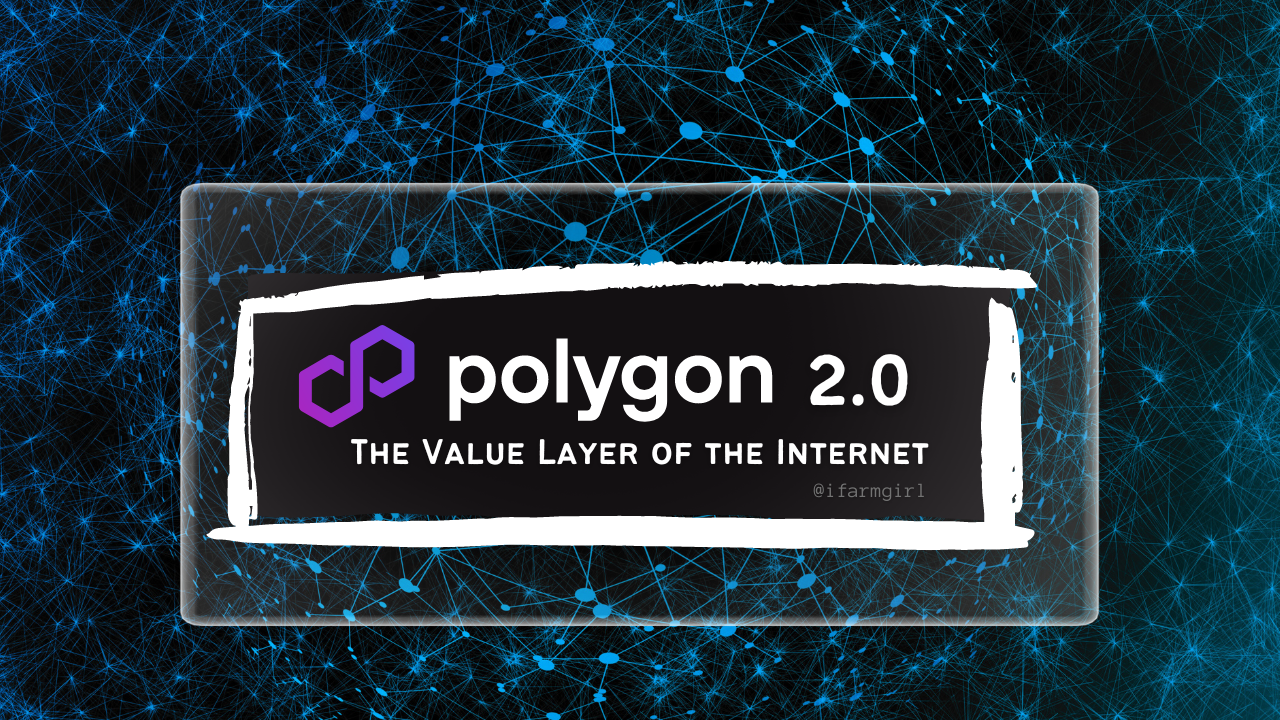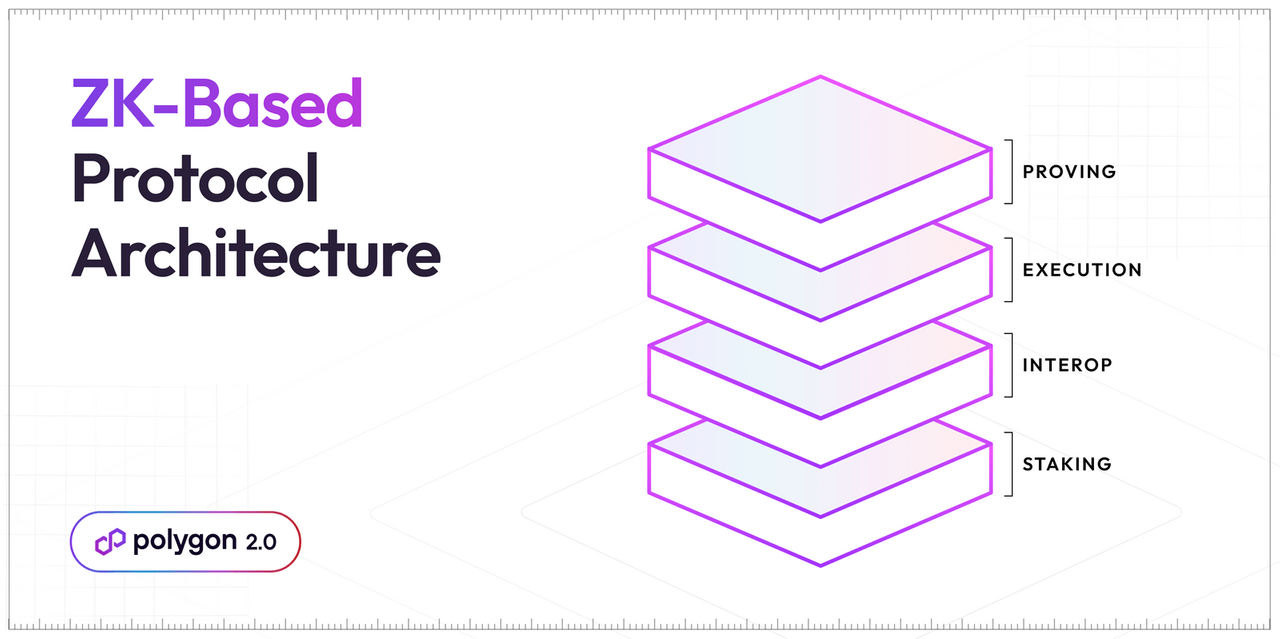Polygon 2.0
On the 12th last month, Polygon announced and introduced what they call their blueprint for building the ultimate Value Layer of the Internet.
And that is the Polygon 2.0 which accordingly brings Ethereum to Internet-scale. It is a set of proposed upgrades that would "radically reimagine almost every aspect of Polygon, from protocol architecture to tokenomics to governance.(Source)
It is a roadmap for how Polygon will become the Value Layer, offering unlimited scalability and unified liquidity via ZK tech. - (Twitter)
But what is Value Layer of the Internet?
The internet allows anyone to create and exchange information and the Value Layer is the fundamental protocol that will enable anyone to create, exchange and program value. And this is what Polygon 2.0 aims to do.
To quote their statement on the announcement, re:
While the Internet democratized access to information, the Value Layer democratizes access to the global economy. It enables decentralized finance, digital ownership, new mechanisms for coordination and much more. It is the missing piece of an Internet that serves users, not gate-keepers, rent-seekers or middle-men.
(Source)
Apparently, Polygon 2.0 is the result of more than a year of collaboration between Polygon Labs, developers, researchers, applications, node operators, validators, and the broader Polygon and Ethereum communities.
The key features of Polygon 2.0 include first, unlimited scalability where the network can support an unlimited number of chains and cross-chain interactions can happen instantly and safely. Second - unified liquidity where users will feel like they are using a single chain and having seamless usage across zk-Ethereum. Third - Polygon 2.0 will be a network of ZK-powered L2 chains, which are secured by zero-knowledge proofs. And fourth - the network will be unified via a novel cross-chain coordination protocol. Most these features are not available in the current Polygon network.
(Sources: 1 / 2 / 3)
Polygon 2.0 is setting out to be a network of interconnected chains powered by ZK technology, a cryptographic technique that allows one party, called the prover, to prove the validity of a statement to another party, known as the verifier, without revealing any additional information beyond the statement's validity. (Cointelegraph)
Polygon 2.0 Timeline & Key Announcements
As the scope of this endeavor is vast, they stated that they will be putting out details in a series of blog updates, community forums, AMAs with the founders and engineers etc. And here's the important timeline from their announcement post.
19th of June 2023
Proposed to upgrade Polygon PoS to zk Layer 2
This is a proposal presented by the engineering team of Polygon Labs to update current PoS to a zkEVM Validium, "a first-of-its-kind, decentralized ZK Layer 2 where Polygon PoS would inherit Ethereum's unmatched security, while preserving low fees & high scalability." (Twitter)
If the proposal passes, Polygon PoS and its $2B in assets, millions of users, and thousands of apps would seamlessly migrate to this bleeding-edge technology. The upgrade could go live on mainnet by the end of Q1 2024. (Polygon Lab Twitter)
Also, if the proposal is accepted by the Polygon community, it would enable Polygon PoS to become more secure and more performant while still being equally easy and affordable to use. And there will be higher security for users and seamless interoperability (compatibility) with every other chain in the Polygon 2.0 ecosystem. More info here.
29th June 2023
Protocol Tech Stack
The engineers presented the proposed architecture for Polygon 2.0 which is formalized as a collection of protocol layers designed to operate together like that of the Internet Protocol Suite, each enabling an important process within the network.
The four layers are as follows, re: Staking Layer: Proof-of-Stake (PoS) implemented on Ethereum via 2 smart contracts, re: Validator and Chain Managers. Interop Layer: Facilitates secure and seamless cross-chain messaging within the Polygon ecosystem. Execution Layer: Enables any Polygon chain to produce sequenced batches of transactions or blocks. Proving Layer: Generates proofs for all transactions – internal and external (i.e. cross-chain) – for every Polygon chain. More information about these layers are outlined here. To date, two proposals have already been presented and they still need the review and approval of the Polygon community. The next expected update will come on the 10th of July and that will be on the tokenomics of Polygon and the Governance on the 17th of July. On the Polygon 2.0 roadmap, there are six key updates or upgrades that are yet to come. It will be interesting to learn about them in the coming weeks. Polygon keeps building scaling solutions and this new development (Polygon 2.0) is a step up on their aim to build a protocol that will enable anyone to create and exchange value through their network. And their goal is to achieve that in a decentralized manner by involving the Polygon community in general. Their vision of building and offering unlimited scalability and unified liquidity via ZK technology might sound ambitious but with the history of Polygon having built various scaling solutions through the years (Polygon zkEVM, Polygon Supernets etc), we might be able to see this happen in the next year or so. Note: For infotainment only. Lead image created on Canva. Logo via Polygon. No copyright infringement intended. 02072023/09:50ph
(src)
Conclusion




